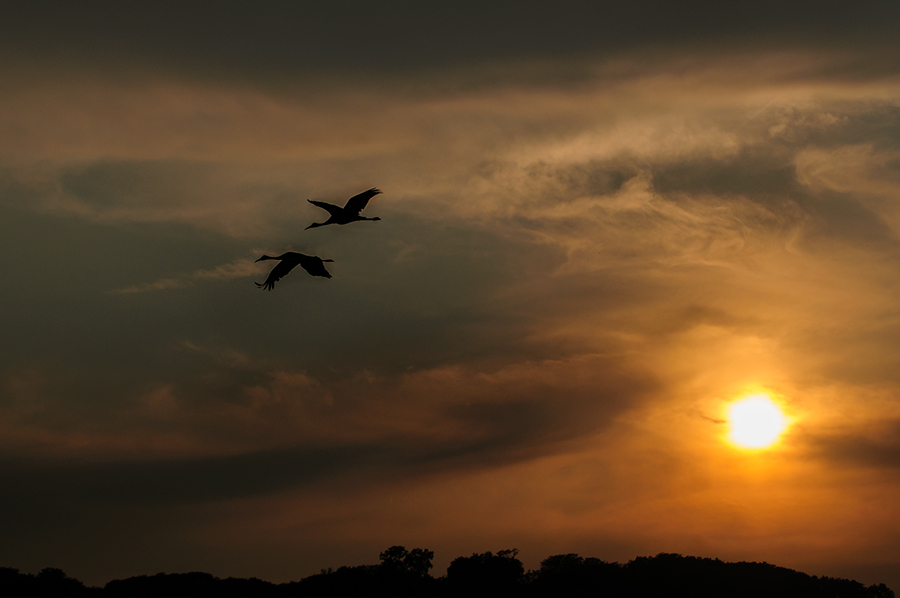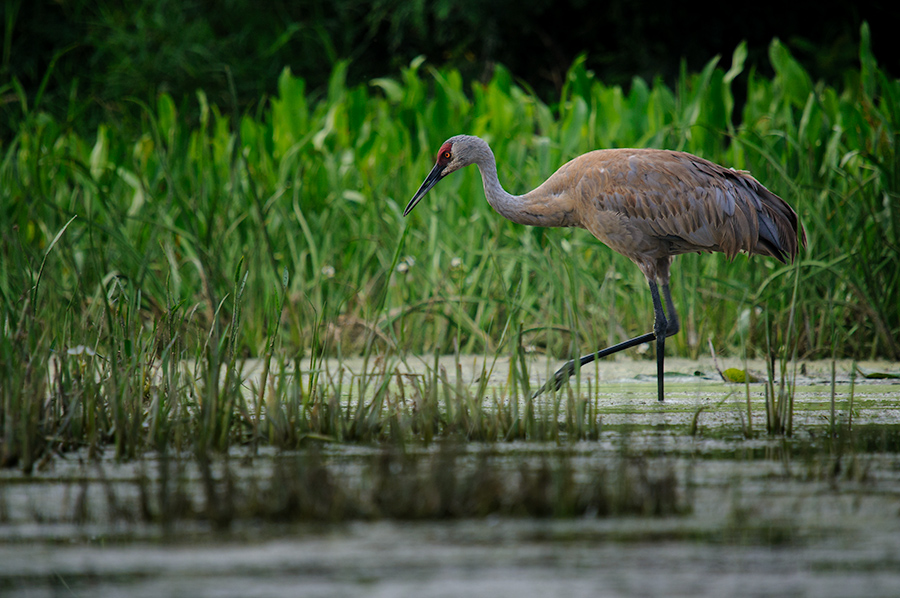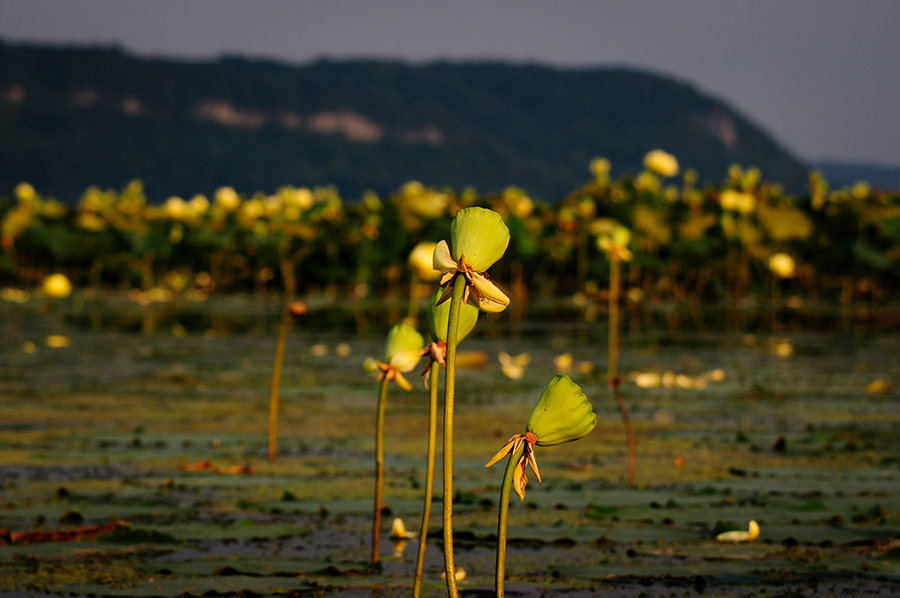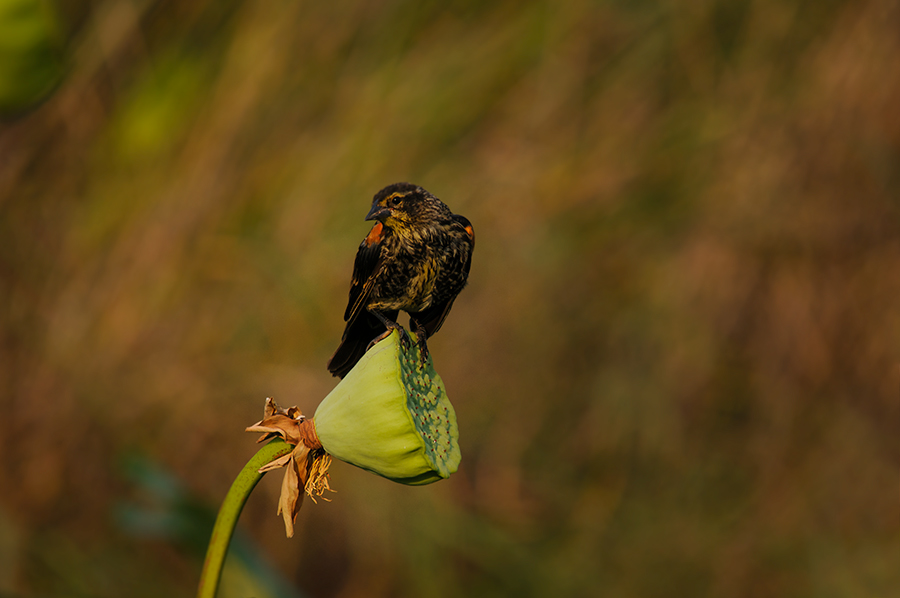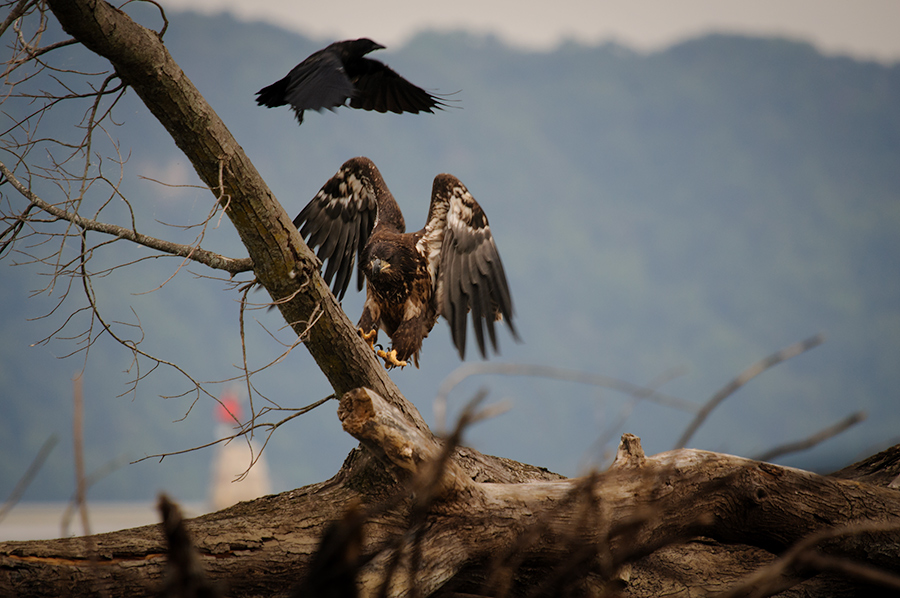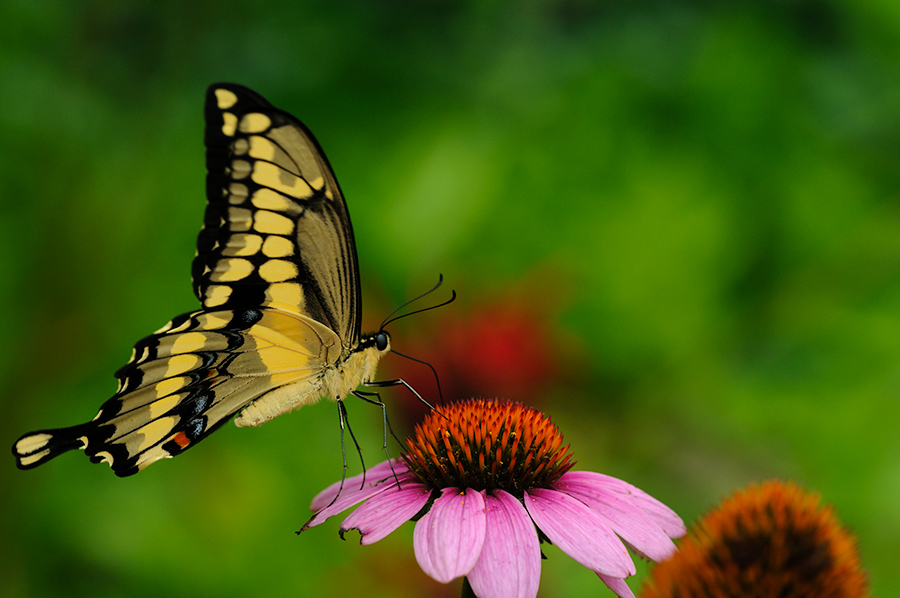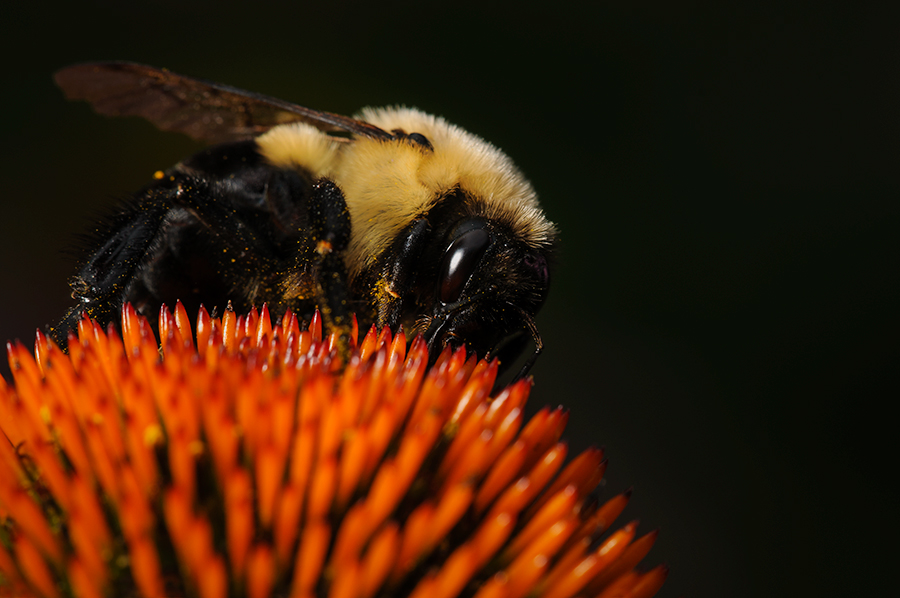
Saturday afternoon I went to the Green Island Wetlands but this is not what I like to talk about today. I left early in order to go back to Mud Lake and maybe have another look at the Sandhill Cranes. Well, I never put the kayak into the water that day, but let's start with the background story first.
The Iowa DNR (for my German friends: Department of Natural Resources) has an Osprey restoration project going on since 2008 in order to establish nesting Ospreys in Iowa again. Young birds are provided by the Minnesota and Wisconsin DNR, obviously from areas where Ospreys are well established. This information is provided on an information board that is located right beside a roosting tower at Mud Lake along the Mississippi.
I heard that this year four birds were kept inside the tower and fed for a few weeks. The tower has a barred gate so that the birds can get used to their new environment. I have been there recently but have never seen more than two Ospreys at a time. From the ground you can see only the area right behind the steel bars and maybe the other two birds stayed in the back and out of sight. The gate faces the Mississippi River and is on the other side of what you can see in the picture here. A week ago the gate was finally opened. A friend of mine sent me an email (thank you Linda) telling me that two Ospreys are still around the tower and obviously still being fed.
When I came to Mud Lake Park Saturday evening I saw the two birds sitting on the posts of the tower and they made quite a bit of noise. It was a good reason to change my plans immediately. Got the tripod with gimbal head and camera out of the car, and started working the Ospreys. One flew away after a few minutes but this happened while I was still far away from the tower. The second one stayed there the whole time. It is not always easy to judge what distance is not too close for the birds. I hate to put stress on any animal just because of my presence. The sun threw some nice and warm light onto the bird just before it disappeared behind the trees on top of the bluffs that contain the valley.

I learned from the information board that after four months the Ospreys migrate for the first time. They spent the first year in South American but return during their second year to Iowa. I really believe this is a great project and my respect goes to those companies and institutions that have sponsored it. It is just good to see that something is done for nature restoration. Money well spent!
I saw an Osprey in the Mud Lake area and over the Mississippi in April (see my post Nature clicks #147). I don't know if this was just a migrating bird or if this particular Osprey has been released in this area in a previous year, but it is so nice to have them here, not just from a photographer's standpoint...









